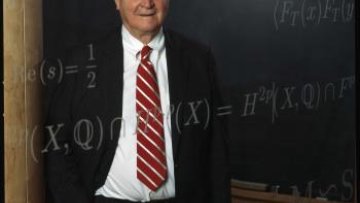Reducing tissue hypoxia for cancer therapy
Abstract
Hypoxia, i.e. a reduction in dissolved oxygen concentration below physiologically normal levels, has been identified as playing a critical role
in the progression of many types of disease and as a key determinant of the success of cancer treatment. It poses a particular challenge for treatments
such as radiotherapy, photodynamic and sonodynamic therapy which rely on the production of reactive oxygen species. Strategies for treating hypoxia have
included the development of hypoxia-selective drugs as well as methods for directly increasing blood oxygenation, e.g. hyperbaric oxygen therapy, pure
oxygen or carbogen breathing, ozone therapy, hydrogen peroxide injections and administration of suspensions of oxygen carrier liquids. To date, however,
these approaches have delivered limited success either due to lack of proven efficacy and/or unwanted side effects. Gas microbubbles, stabilised by a
biocompatible shell have been used as ultrasound contrast agents for several decades and have also been widely investigated as a means of promoting drug
delivery. This talk will present our recent research on the use of micro and nanobubbles to deliver both drug molecules and oxygen simultaneously to a
tumour to facilitate treatment.
En route to mending broken hearts
Abstract
We adopt the paradigm of understanding how the heart develops during pregnancy as a first principal to inform on adult heart repair and regeneration. Our target for cell-based repair is the epicardium and epicardium-derived cells (EPDCs) which line the outside of the forming heart and contribute vascular endothelial and smooth muscle cells to the coronary vasculature, interstitial fibroblasts and cardiomyocytes. The epicardium can also act as a source of signals to condition the growth of the underlying embryonic heart muscle. In the adult heart, whilst the epicardium is retained, it is effectively quiescent. We have sought to extrapolate the developmental potential of the epicardium to the adult heart following injury by stimulating dormant epicardial cells to give rise to new muscle and vasculature. In parallel, we seek to modulate the local environment into which the new cells emerge: a cytotoxic mixture of inflammation and fibrosis which prevents cell engraftment and integration with survived heart tissue. To this end we manipulate the lymphatic vessels in the heart given that, elsewhere in the body, the lymphatics survey the immune system and modulate inflammation at peripheral injury sites. We recently described the development of the cardiac lymphatic vasculature and revealed in the adult heart that they undergo increased vessel sprouting (lymphangiogenesis) in response to injury, to improve function, remodelling and fibrosis. We are currently investigating whether increased lymphangiogenesis functions to clear immune cells and constrain the reparative response for optimal healing.
Networks: from Matrix Functions to Quantum Physics
Abstract
This half-day research workshop will address issues at the intersection between network science, matrix theory and mathematical physics.
Network science is producing a wide range of challenging research problems that have diverse applications across science and engineering. It is natural to cast these research challenges in terms of matrix function theory. However, in many cases, closely related problems have been tackled by researchers working in statistical physics, notably quantum mechanics on graphs and quantum chaos. This workshop will discuss recent progress that has been made in both fields and highlight opportunities for cross-fertilization. While focusing on mathematical, physical and computational issues, some results will also be presented for real data sets of relevance to practitioners in network science.
The Jacobian problem of Coifman, Lions, Meyer and Semmes
Abstract
R. Coifman, P.-L. Lions, Y. Meyer and S. Semmes showed in their celebrated paper from 1993 that numerous compensated compactness quantities such as Jacobians of mappings in $W^{1,n}(\mathbb{R}^n,\mathbb{R}^n)$ belong the real-variable Hardy space $\mathcal{H}^1(\mathbb{R}^n)$. They proceeded to ask what is the exact range of these nonlinear quantities and in particular whether the Jacobian operator $J$ maps $W^{1,2}(\mathbb{R}^2,\mathbb{R}^2)$ onto $\mathcal{H}^1(\mathbb{R}^2)$.
I present the proof of my recent result that $J \colon W^{1,n}(\mathbb{R}^n,\mathbb{R}^n) \to \mathcal{H}^1(\mathbb{R}^n)$ is non-surjective for every $n \ge 2$. The surjectivity question is still open when the domain of definition of $J$ is the inhomogeneous Sobolev space $\dot{W}^{1,n}(\mathbb{R}^n,\mathbb{R}^n)$. I also shortly discuss my work on T. Iwaniec's conjecture from 1997 which states that for every $n \ge 2$ and $p \in [1,\infty[$ the operator $J \colon W^{1,np}(\mathbb{R}^n,\mathbb{R}^n) \to \mathcal{H}^p(\mathbb{R}^n)$ has a continuous right inverse.
Existence of weak solutions for some multi-fluid models of compressible fluids
Abstract
Existence results in large for fully non-linear compressible multi-fluid models are in the mathematical literature in a short supply (if not non-existing). In this talk, we shall recall the main ideas of Lions' proof of the existence of weak solutions to the compressible (mono-fluid) Navier-Stokes equations in the barotropic regime. We shall then eplain how this approach can be adapted to the construction of weak solutions to some simple multi-fluid models. The main tools in the proofs are renormalization techniques for the continuity and transport equations. They will be discussed in more detail.
Invertible Topological Field Theories
Abstract
Topological field theories (TFT's) are physical theories depending only on the topological properties of spacetime as opposed to also depending on the metric of spacetime. This talk will introduce topological field theories, and the work of Freed and Hopkins on how a class of TFT's called "invertible" TFT's describe certain states of matter, and are classified by maps of spectra. Constructions of field theories corresponding to specific maps of spectra will be described.
Spinning, stalling, and falling apart
Abstract
The birth of fixed-wing, powered flight in the first decade of the twentieth century brought with it significant potential for pilots to return to Earth by unintended, often fatal, means. I will discuss the nature of the contemporary mathematical and engineering debates associated with these facets of flight, and the practical steps taken to facilitate safer aircraft and more robust operating procedures.
With the passing of Landon T. Clay on 29 July, Oxford Mathematics has lost a treasured friend whose committed support and generosity were key factors in the recent development of the Mathematical Institute. The support of Landon and his wife Lavinia was the indispensible mainstay of the project to create the magnificent new home for Oxford Mathematics in the Andrew Wiles Building; the building is a symbol of the enduring legacy of their insightful, incisive support for mathematics and science.



